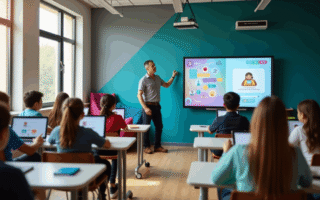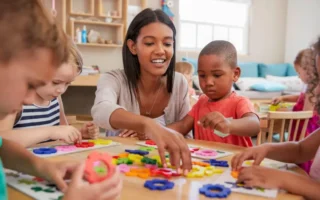There is a special kind of energy in a classroom at the start of a new term. Freshly sharpened pencils leave faint curls of wood on the desk. Notebooks wait to be filled, their pages smooth beneath curious fingertips. The faint scent of marker pens lingers in the air. Every sound—the snap of a pencil case, the rustle of paper, the rhythmic tapping of pens—signals a beginning. Stationery for schools is more than a list of supplies. It is the quiet architecture of learning itself, shaping how pupils think, organise, and create.
The power of handwriting and colour
Educational psychology continues to remind us that writing by hand supports deeper learning. When children form letters on paper, they activate regions of the brain linked to memory and comprehension. The slower pace of handwriting allows time for reflection, helping ideas to take shape before they fade. Writing by hand is not simply recording information; it is part of understanding it.
Colour also plays a powerful role. Using coloured pens or highlighters has been shown to increase attention and engagement. Bright ink draws the eye to key points, turning revision into a visual journey rather than a passive task. A pupil might use one colour for definitions and another for examples, training the mind to associate hue with meaning. In this way, the right stationery for schools becomes a cognitive tool, helping ideas stick and information flow naturally.
Stationery as a source of confidence
A child’s relationship with learning is often reflected in their tools. A smooth pen that glides easily across the page can make writing feel effortless. A well-balanced pencil can give young hands control and precision. These subtle differences build confidence, especially for children who are still developing fine motor skills. When stationery feels good to use, it reduces frustration and builds pride in presentation.
Teachers see this first-hand. A hesitant writer might flourish once given a comfortable pen. A tidy set of exercise books can inspire a sense of order and accomplishment. Even something as small as owning a personal set of coloured pencils can make a child feel responsible and capable. Stationery for schools, when thoughtfully chosen, can empower pupils to take ownership of their learning and find pleasure in the process.
How teachers use tools creatively
Walk into a lively classroom and you will often find stationery being used in inventive ways. Sticky notes might cover the wall during a brainstorming activity, each one representing an idea or question. Pupils move them around to group thoughts, see connections, and vote on priorities. Whiteboard markers might turn a maths lesson into an interactive quiz, with students racing to solve problems at the front of the class. Art supplies like chalk, pastels, and felt-tips transform ordinary topics into hands-on exploration.
When stationery is integrated into lessons rather than kept in drawers, it fuels participation. It gives abstract ideas a physical form, making learning visible and shared. Teachers know that the right mix of pens, paper, and colour can turn even the quietest pupils into active thinkers.
Organisation as a foundation for learning
Good stationery also supports one of the most underrated skills in education—organisation. Learning to manage notes, keep materials tidy, and track assignments prepares pupils for the structure of later life. A labelled folder teaches sorting and prioritising. A planner helps pupils visualise time. Even a well-kept pencil case represents discipline and readiness.
Stationery for schools that balances function and appeal plays a key role here. Items that are durable but visually engaging encourage responsibility. Children are more likely to care for tools they enjoy using. Schools often choose ranges that blend practicality with a sense of fun—bright covers for notebooks, smooth-grip pens that reduce strain, rulers that bend without snapping. Each small design choice supports focus and order.
Choosing stationery that works
For schools and suppliers alike, the challenge lies in selecting items that meet both educational and emotional needs. Durability matters, but so does texture, weight, and colour. Pens should be easy to hold, paper should resist tearing, and erasers should leave pages clean. Beyond performance, stationery should feel inviting. When materials are chosen with thought, they reduce barriers to creativity and concentration.
Cost is also a factor, particularly when equipping large classrooms. The most effective stationery for schools tends to strike a balance between value and longevity. Refillable pens, sturdy notebooks, and multi-use art materials save money over time while supporting sustainability. Eco-friendly choices are increasingly important too. Recycled paper and biodegradable packaging teach pupils that creativity and responsibility can go hand in hand.
Tools that inspire curiosity
At its best, stationery is a bridge between thought and expression. A blank notebook can become a diary, a science log, or a collection of dreams. A box of crayons can turn a maths problem into a colour-coded puzzle. Every piece of stationery opens a small door to curiosity, inviting children to explore their world with confidence and imagination.
In the end, the most effective stationery for schools is not about brand or quantity but about potential. It invites ideas to take shape and gives pupils the means to express them. With the right mix of pens, pencils, and paper, a classroom becomes more than a place of instruction—it becomes a place of creation. When the tools of learning inspire joy and pride, education moves beyond the task of remembering facts and becomes the art of discovering how to think.




